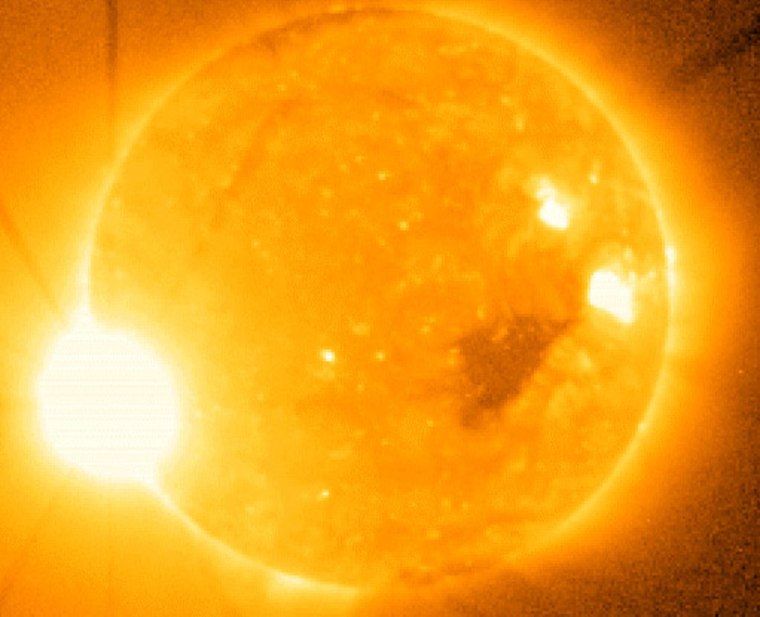A surprising solar flare sent a stream of pure hydrogen at Earth.
"We've detected a stream of perfectly intact hydrogen atoms shooting out of an X-class solar flare," said researcher Richard Mewaldt of Caltech. "If we can understand how these atoms were produced, we'll be that much closer to understanding solar flares."
Solar flares occur when the sun's twisted magnetic fields suddenly release their stored energy. The energy jolts are classified into three categories, with X-class solar flares being major events that can trigger radio blackouts around the world and long-lasting radiation storms in the upper atmosphere. (M-class are medium-sized flares and C-class are small flares with few consequences on Earth.)
The event occurred on Dec. 5, 2006, when a large sunspot rounded the sun's eastern limb and with little warning it exploded. On the "Richter scale" of flares, which ranks X1 as a big event, the blast registered X9, making it one of the strongest flares over the past 30 years.
Such a ferocious blast usually produces a blizzard of high-energy particles dangerous to both satellites and astronauts. But an hour later, when NASA's twin Solar Terrestrial Relations Observatory (STEREO) spacecraft detected the particles, they were of an unexpected type.
"It was a burst of hydrogen atoms," Mewaldt said. "No other elements were present, not even helium (the sun's second-most abundant atomic species). Pure hydrogen streamed past the spacecraft for a full 90 minutes."
Slideshow 12 photos
Month in Space: January 2014
Next came 30 minutes of quiet. Then a second wave of particles enveloped the STEREO spacecraft. The astronomers said these particles were the ions typically produced by solar flares, including protons and heavier ions, such as ions of helium, oxygen and iron.
So how did hydrogen atoms survive the energy blast of a solar flare, which packs a punch equal to a hundred million hydrogen bombs? Turns out, the hydrogen atoms weren't so hardy. The researchers think the atoms were obliterated, beginning their journey toward Earth in pieces, as protons and electrons.
"Before they escaped the sun's atmosphere, however, some of the protons captured an electron, forming intact hydrogen atoms," Mewaldt said. "The atoms left the sun in a fast, straight shot before they could be broken apart again."
Since hydrogen atoms are electrically neutral, this hydrogen stream would have shot straight out of the sun without any interference from the sun's magnetic fields. That wasn't the case for the ions, which did show a delay, not being detected for a half hour or so after the hydrogen burst.
"Ions are electrically charged and they feel the sun's magnetic field. Solar magnetism deflects ions and slows their progress to Earth," Mewaldt said, adding, "The hydrogen atoms reached Earth almost two hours before the ions."
Mewaldt said that all strong flares might emit hydrogen bursts, but scientists just haven't noticed them before now.
The discovery will be detailed in a forthcoming issue of the Astrophysical Journal Letters.

